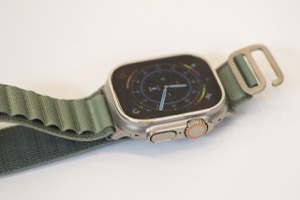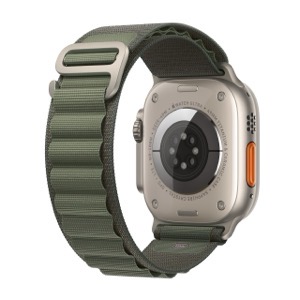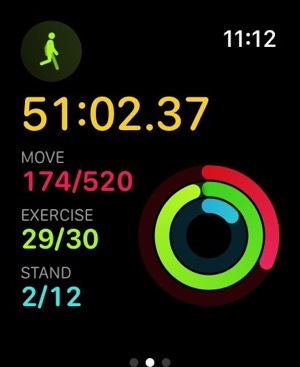 Over the past few weeks I’ve been having a lot of annoying issues with my Apple Watch.
Over the past few weeks I’ve been having a lot of annoying issues with my Apple Watch.
Primarily the problem is around exercise and workouts.
I’ll start a workout, then get into my activity, usually I’ll check my watch to see how I’m doing. It’s at this point that I find the watch has missed as much as 1/2 of my exercise time.
I’ll turn off the workout, then restart the workout and often the subsequent exercise credit will be correctly shown. But because of the weird variances I’m not concentrating on my hiking or enjoying my walk because I’m constantly checking the technology to see if it’s working properly.
I’ve called Apple, their phone people have no clue what’s going on or why something that was working just fine is suddenly not working properly.
The Apple exercise ring is tied to heart rate. So, from a hardware perspective that means that the optical sensors on the Apple Watch have to be clean and unobstructed.
(As an aside, this is why people with darker skin tones have more difficulty getting Apple Watch to properly record their exercise activity. Their natural defense against UV damage to their skin also reduces visible light transmission through their skin. Honestly, If I had to make a trade off, I’d take a darker skin tone than my glow in the dark, skin cancer prone, ghostly white.)
 When the Watch first started giving me trouble, I cleaned the back of the watch containing the sensors and also looked at the wrist I wear the watch on, to determine if there was irritation that might be altering or obstructing the light from the sensors.
When the Watch first started giving me trouble, I cleaned the back of the watch containing the sensors and also looked at the wrist I wear the watch on, to determine if there was irritation that might be altering or obstructing the light from the sensors.
That made little to no difference.
I did notice that if I was shoveling snow, the exercise and movement values updated normally. During snow shoveling I start the HIT (High Intensity Interval Training) workout because the work I’m doing shoveling snow sort of matches the workout.
I also noticed that walking and hiking during snowy times generally worked well.
But if I was hiking or walking on a sunny but coolish day, it wasn’t uncommon for me to lose 1/3 to 1/2 of the exercise time even though I was walking the same route, with the same watch, same band, and same dog dragging me along so he can sniff the next pile of poop.
Why the different behavior? Was Apple updating the sensor Algorithm behind the scenes? Is there some kind of stepped change to the Algorithm that happens after a certain number of workout hours, does it get adjusted based on fitness telemetry gathered during your workouts? I could see this as a form of motivation to get more fit.
If you ask an apple rep these questions, they aren’t able to answer.
 I got so pissed off that I stopped wearing my Apple Watch for a week or so. I admit, I do like the simplicity of a good old fashioned automatic watch. I like the ticking sound at night, and that I don’t have to fiddle with it. Simple Time & Date and I’m pretty happy.
I got so pissed off that I stopped wearing my Apple Watch for a week or so. I admit, I do like the simplicity of a good old fashioned automatic watch. I like the ticking sound at night, and that I don’t have to fiddle with it. Simple Time & Date and I’m pretty happy.
The Apple Watch for me came about because too many shady people were taking way too much interest in my old fashioned watch. Better I’m mugged for a $500 watch than a $15,000 watch.
Plus I could have the joy of locking the Apple Watch from a web site, and listing it as stolen. Fuck you scumbags!! (I’d be fine with having the Apple Watch blow up when I listed it stolen. Let’s go Arabic shall we? You stole, you lost your hand…) Can you tell I’ve got a very dim view of criminals???
Anyway, I heard that there was a Watch OS update coming. So I slapped my Apple Watch on its charger for a while then put it back on. I started experimenting and have begun to wonder if the issue isn’t the watch sensors or the Algorithm, but is instead physiology.
The watch always misses the beginning of the walk. There’s an initial heart rate entry, then as I’m walking the data just stops. At some point in the walk or hike, the data comes back of its own volition, usually when I’m really pushing hard to move up a mountain or the dog and I are moving fast.
But it’s always lost at the beginning of the walk.
I looked back into records of the summer months and there wasn’t any missed data. Then I went back years. I’ve had an Apple Watch 3, 5, and now the Ultra. There was a consistent pattern from late 2019 forward. Lost heart rate data starting in mid to late November and persisting until April. This pattern persisted across the Apple Watch Series 5 and Ultra.
Why is it seasonal?
More confusing, why is the data loss intermittent during those times?
To be fair I was going to write a blog post about how the Apple Watch itself and the monthly challenges create a disincentive to work out or indeed keep fit at all. If a goal is constantly being moved such that an individual cannot ever achieve it, the individual will eventually say, “Fuck It!”
However, I may have stumbled upon new data that would dissuade me from writing such a piece.
Yesterday It was overcast, the humidity was high and it was a bit windy. As I was getting ready for the walk with the dog I put on my usual jacket and on a whim put on my gloves so my hands didn’t get numb from the wind chill. I sighed and started the outdoor walk workout then out the door I went.
I knew at least half the data would be missing for the workout, but hey, why not? A little exercise data even if it’s inaccurate is better than none.
On the walk, I got the usual notification about the miles and pace. And I also got a notification that my exercise ring closed. I didn’t look at it or compare the exercise ring closing with the elapsed time of the workout.
When I got home, I pulled off my gloves, stopped the workout because the screen doesn’t react if I’m wearing gloves. Then I found that the entirety of my workout counted toward the exercise ring. “Typical, I thought, intermittent as hell. Works one day then not for the next 2.”
I picked up the gloves to put them away, and stopped…
Could it be that my hands being cold affects the sensors? What happens when the extremities get cold? The human body will shunt blood flow away from the extremities and toward the core as a protective mechanism against hypothermia. It’s a way of limiting heat loss.
Hmm. If my hands are cold, but I’m wearing a jacket do just my hands turn on the vasoconstriction and would that reduce blood flow to the point that the optical sensors on my wrist wouldn’t accurately detect blood flow?
When I’m shoveling snow, I’m wearing gloves, typically more for protection against blisters and dry skin than for warmth. If it’s windy in fall or winter I may put on gloves for a walk, especially if it’s humid or there’s some kind of misty rain.
When the body has excess heat to bleed off, vasodilation occurs allowing blood to move freely toward the surface of the skin to cool. That’s even before sweating begins. It’s simply thermodynamic heat exchange. That would explain why the end of a walk or hike is almost always accurate, and the beginning isn’t.
I usually walk not wearing gloves in fall and winter. I’m actually a little cold in the beginning of a walk because I don’t want to be too hot and uncomfortable or having to carry my jacket when I’m working my way back up the hill.
I wondered, “Have the times when the watch captured data flawlessly in the cooler months been on those days when I was wearing gloves and / or the temperature was above a certain point?”
I was going to experiment more with this theory today. Unfortunately, I neglected to turn off auto update on the watch and discovered this morning that overnight the OS had updated to 10.4
I suppose I can still experiment even with the OS update. It’s 35°F outside, sunny and calm. Under these circumstances I wouldn’t wear gloves but I’d wear my hat and jacket. I’m thinking I’ll walk the dog without gloves and see if the data loss is present. Then tomorrow I’ll wear gloves and see if the data loss goes away or is minimized.
If it turns out that my theory is correct should I send it to Apple? I guess the real question is Would Apple listen and make the findings available to their phone staff to save other people the frustration and annoyance I’ve experienced? Would Apple even incorporate my theoretical findings into their testing to prove or disprove me. It would be nice if they did, and provided a real technical explanation.
But somehow I don’t think they would, even if I provided them with the data.
Apple has become exceedingly arrogant. Couple that with their notorious secrecy and minimalist instruction manuals, and I doubt seriously they’re interested in making information available.
I’ll think about it while attempting to confirm my theory.
Once again, this is why companies should have real humans testing software and products instead of just doing automated stuff.
